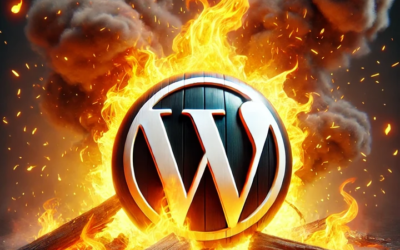Managing a WordPress site can feel overwhelming, especially with so many tasks to juggle. While WordPress is a powerful tool, it’s easy to make mistakes if you’re not careful. Understanding some of the most common missteps can help you keep your website running smoothly.
By steering clear of these mistakes, you’ll help ensure your WordPress site remains accessible and effective for your audience. Let’s delve into these common errors and explore how to avoid them.
Neglecting Regular Updates and Backups
One of the biggest mistakes in WordPress management is not keeping your site up to date. Updates aren’t just about new features; they often include important security patches and bug fixes. Ignoring updates can leave your site vulnerable to attacks and performance issues. It’s crucial to update WordPress core, themes, and plugins regularly.
To keep your site safe and running smoothly, follow these tips:
1. Set a Schedule: Make a habit of checking for updates every week. This ensures that you don’t miss important releases.
2. Automatic Updates: Enable automatic updates for plugins and themes if possible. This can save you time and ensure your site is always current.
3. Backup Before Updating: Always back up your website before making any updates. This way, if anything goes wrong, you can easily restore your site to its previous state.
Backups are your safety net. Without them, you risk losing everything if your site crashes or gets hacked. Back up your site regularly and keep multiple copies in different locations. Consider using automated backup solutions to make this process easier and more reliable.
Overloading with Unnecessary Plugins and Themes
Using too many plugins and themes can slow your site down, lead to conflicts, and create security vulnerabilities. It’s tempting to add new features with plugins, but caution is key. Each plugin adds extra code to your site, which can affect performance and increase the risk of errors.
Here are some ways to manage plugins and themes wisely:
- Evaluate Needs: Only install plugins that you really need. If a plugin doesn’t serve a specific purpose, it’s best to remove it.
- Use Trusted Sources: Only download plugins and themes from reputable sources. Check reviews and ratings to ensure they are safe and reliable.
- Limit Active Plugins: Keep the number of active plugins to a minimum. Regularly check your plugin list and deactivate any that are not essential.
- Regular Cleanup: Perform routine cleanups of your themes and plugins. Delete any unused or outdated items to keep your site lean.
By managing plugins and themes carefully, you can maintain fast loading times and prevent unexpected issues. This approach helps keep your WordPress site efficient and user-friendly.
Ignoring Website Security Essentials
Security is a must for any WordPress site. Ignoring security can lead to breaches, data loss, and a damaged reputation. Hackers are always finding new ways to access sites, so it’s crucial to implement strong security practices to protect your site and its visitors.
Here are key security measures to consider:
1. Use Strong Passwords: Ensure your passwords are complex and unique. Encourage all users with access to your site to follow this practice.
2. Install a Security Plugin: Consider using security plugins that offer features like malware scanning and firewall protection to safeguard your site.
3. Limit Login Attempts: Set a limit on login attempts to prevent brute-force attacks. This feature locks out users who repeatedly fail to input the correct password.
4. Enable Two-Factor Authentication: Adding an extra layer of security helps protect your site by requiring users to provide two forms of identification.
5. Keep Software Up-to-Date: Always run the latest versions of WordPress, plugins, and themes to patch known security vulnerabilities.
By prioritizing security, you keep your website safe from threats and maintain the trust of your users.
Overlooking Performance Optimization
Performance is key to keeping visitors on your site. A slow site frustrates users and can make them leave. Optimizing your site ensures it loads quickly and runs smoothly, which helps retain users and improve search engine rankings.
Consider these performance tweaks:
- Optimize Images: Large images slow down site speed. Use image compressors to reduce file size without losing quality.
- Use a Caching Plugin: Caching plugins store a version of your site, reducing the work your server does each time a page loads. This leads to faster loading times.
- Minimize HTTP Requests: Limit the number of elements like scripts and images that your site needs to load. Use tools to combine and minimize files for quicker performance.
- Select a Reliable Host: A good web host provides fast, reliable service. A poor choice can cause slowdowns and frequent downtime.
- Remove Unused Features: Disable and remove any features or plugins that aren’t essential, as they may slow down your site.
Performance optimization enhances user experience and helps your site perform well in search engines, ultimately contributing to its success.
Conclusion
Managing a WordPress site means keeping many balls in the air, from updates and security to performance and plugins. It requires attention and knowledge to avoid common pitfalls that can harm your website. By handling these areas effectively, you’ll contribute to a seamless experience that delights users and supports your goals.
Looking to elevate your WordPress site management? Eight Hats is your go-to partner for exceptional custom WordPress web designand development services. Contact us to learn how we can help manage and boost your website’s performance, security, and reliability. Reach out today and let’s make your WordPress site better together!




